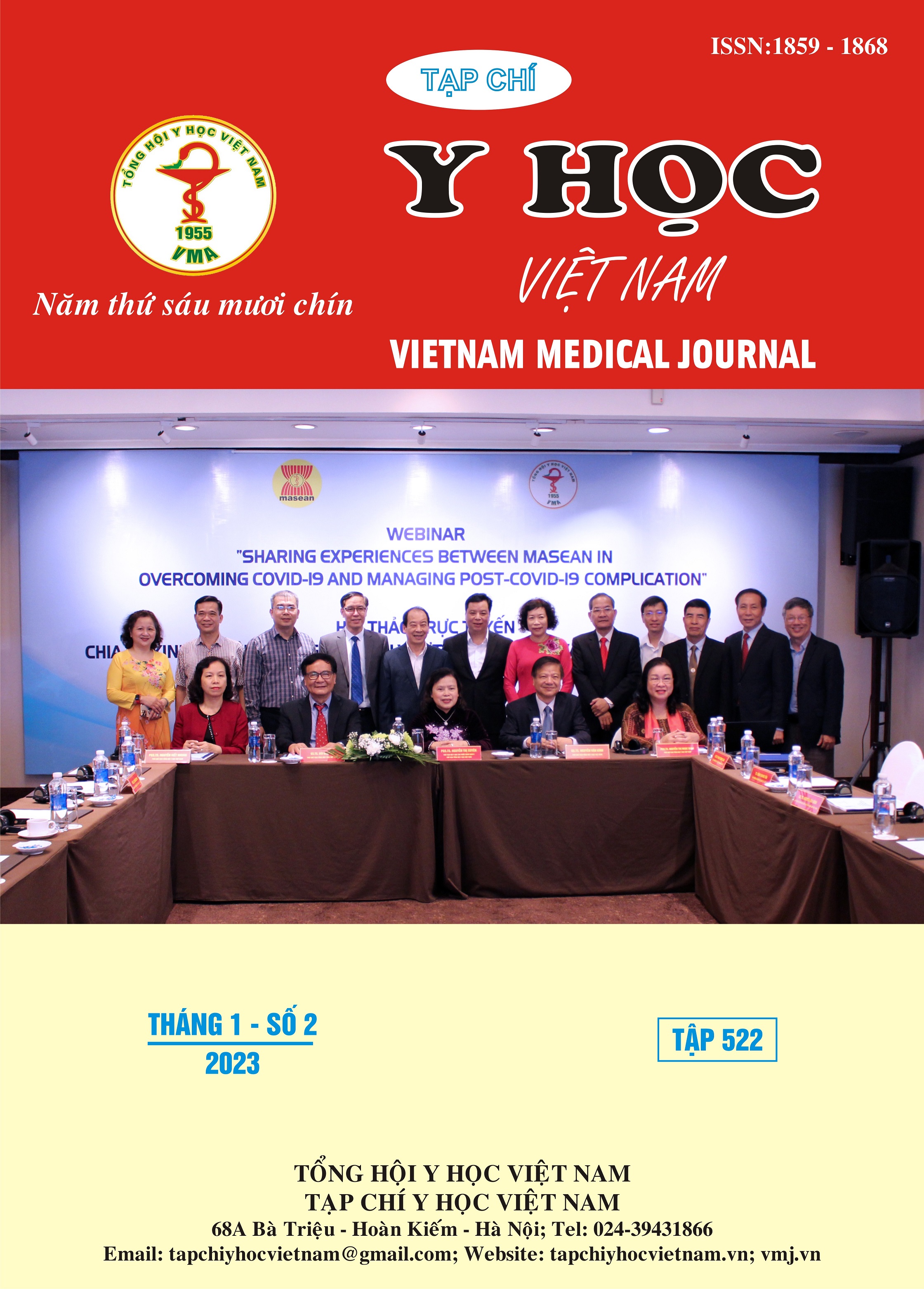SURVEY ON THE POOR PROGNOSTIC FACTORS IN PATIENTS WITH DEEP NECK INFECTIONS AT CHO RAY HOSPITAL FROM 2019 TO 2022
Main Article Content
Abstract
Background: Deep neck infections are serious infections affecting the deep cervical fascia and spaces. Identifying predictive factors for severe deep neck infections may allow the establishment of appropriate treatment. Objective: To identify predictive factors for complications of deep neck infections. Methods: We retrospectively and prospectively analyzed 257 cases of DNIs treated at Cho Ray hospital between December 2019 and July 2022. The multivariate logistic regression method was used to analyze clinical and laboratory factors associated with complications of DNIs. Results: In this study, complications in DNI patients occurred in 100 out of 257 cases. The multivariate logistic regression model showed that the presence of dyspnea (p<0.001), chest pain (p=0.01), low peripheral oxygen saturation (p=0.01) on admission, retropharyngeal space involvement (p=0.001), involvement of multiple spaces (p=0.01), and necrotizing fasciitis (p<0.001) were more likely to have complicated deep neck infections. Conclusion: Dyspnea, chest pain, peripheral oxygen saturation on admission, retropharyngeal space involvement, number of space involvement, and necrotizing fasciitis are the predictive factors for complications.
Article Details
Keywords
Deep neck infections, complications, multivariate analysis, predictors.
References
2. Priyamvada S, Motwani G. A Study on Deep Neck Space Infections. Indian J Otolaryngol Head Neck Surg. Oct 2019;71(Suppl 1):912-917. doi:10.1007/s12070-019-01583-4
3. Trần Minh Trường. Nhiễm trùng cổ sâu. Bài Giảng Tai Mũi Họng Thực Hành. Nhà xuất bản Y học; 2018:7-38:chap 1.
4. Osunde OD, Akhiwu BI, Efunkoya AA, Adebola AR, Iyogun CA, Arotiba JT. Management of fascial space infections in a Nigerian teaching hospital: A 4-year review. Niger Med J. Jan 2012;53(1):12-5. doi:10.4103/0300-1652.99823
5. Yang SW, Lee MH, Lee YS, Huang SH, Chen TA, Fang TJ. Analysis of Life-Threatening Complications of Deep Neck Abscess and the Impact of Empiric Antibiotics. ORL. 2008;70(4):249-256. doi:10.1159/000132094
6. Barber BR, Dziegielewski PT, Biron VL, Ma A, Seikaly H. Factors associated with severe deep neck space infections: targeting multiple fronts. J Otolaryngol Head Neck Surg. 2014;43(1):35. doi:10.1186/s40463-014-0035-5
7. Umihanic S, Umihanic S, Ramic N, Kamenjakovic S, Tihic N, Mahmutovic E. Predictors of poor outcome of deep neck infections. Medeniyet Med J. 2018;33(1):28-32. doi:10.5222/mmj.2018.49140
8. Trần Anh Bích, Trần Minh Trường. Nhiễm trùng cổ sâu trên bệnh nhân đái tháo đường: so sánh hình ảnh lâm sàng và kết quả điều trị với bệnh nhân không đái tháo đường từ 1/2005 đến 9/2006. Tạp chí Y học thành phố Hồ Chí Minh. 2006;11(1)
9. Trần Võ Thủy Chung. Đánh Giá Thang Điểm LRINEC Trong Chẩn Đoán Viêm Mạc Hoại Tử Vùng Đầu Cổ Tại Bệnh Viện Chợ Rẫy. Luận văn Bác sĩ nội trú. Đại học Y Dược thành phố Hồ Chí Minh; 2015.
10. Mejzlik J, Celakovsky P, Tucek L, et al. Univariate and multivariate models for the prediction of life-threatening complications in 586 cases of deep neck space infections: retrospective multi-institutional study. J Laryngol Otol. Sep 2017;131(9):779-784. doi:10.1017/s0022215117001153.


